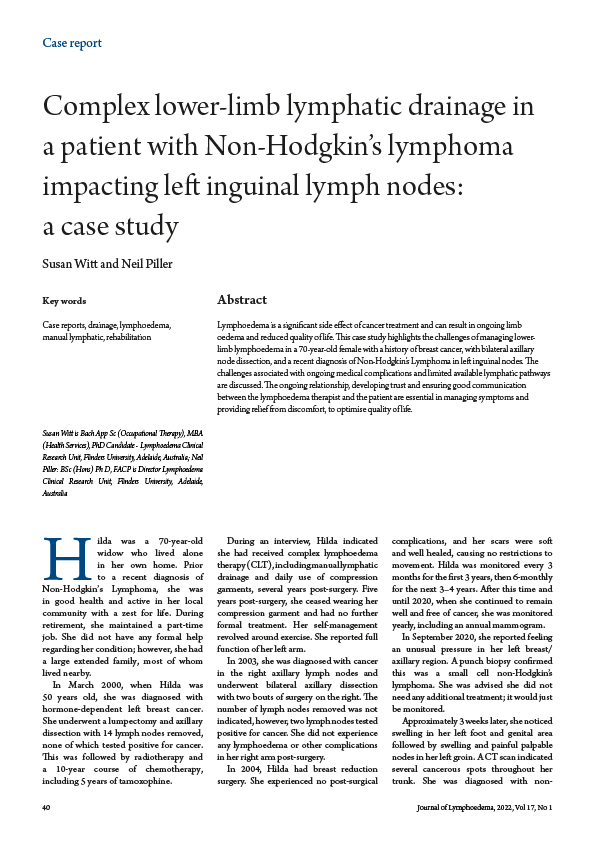<p>Background: Lymphoedema has a significant effect on patient quality of life due to the daily experience of limb symptoms such as pain, tightness and heaviness. While treatment of lymphoedema often focuses on reduction in objective limb measures, there is minimal evidence to support that this reduces subjective limb symptoms.</p>n<p>Aims: This study aimed to investigate the relationship between subjective arm symptoms and objective limb size measurements in patients with chronic upper-limb secondary lymphoedema.</p>n<p>Methods: A retrospective audit of previously conducted clinical trial data was undertaken, comparing objective measures of bio-impedance spectroscopy and perometry with Likert-scale data, pre- and post-interventions.</p>n<p>Results: There is some evidence that reduction in objective limb measures reduces limb symptoms, but limb symptoms were also reduced without reducing limb size in a yoga intervention. Thus, there is some element of subjective experience that is independent of limb size.</p>n<p>Conclusions: This work supports current treatment of lymphoedema, but serves to remind practitioners of the importance of holistic care in chronic disease.</p>



